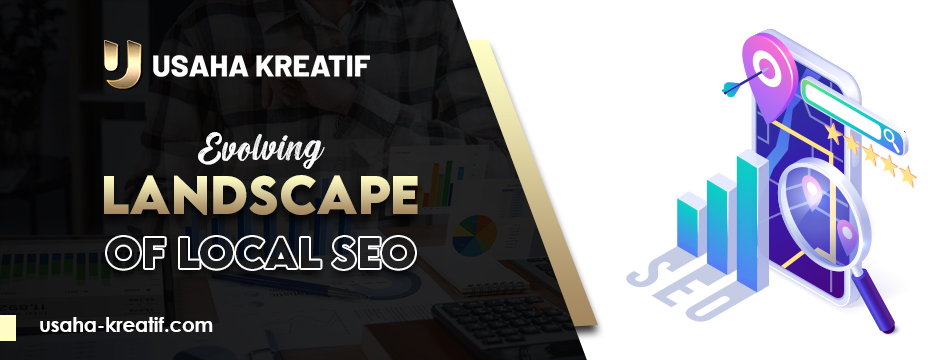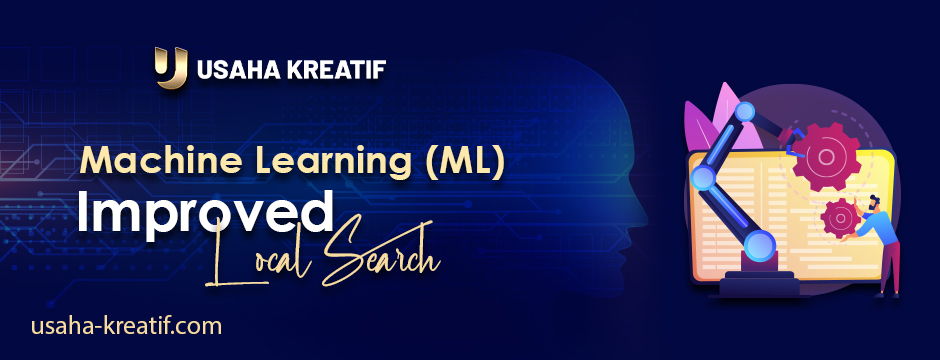The Evolving Landscape of Local SEO, Including the Use of Location Data and Reviews
- February 24, 2023
- Search Engine Optimization

Local search has risen to prominence in the last decade and has become an essential component of business SEO. Along the way, search engine algorithms and SEO best practices have been updated, affecting how local businesses rank in search results. While some of these changes were gradual and barely noticeable at the time, others were abrupt and drastic, forcing businesses to reconsider their basic SEO strategies and rethink how to optimize their online visibility.
What precisely is local SEO?
Local SEO is a specialized SEO process that boosts the visibility of local businesses within or near their geographical area. It is used to increase foot traffic or brand awareness of a physical business or a business service operating within a specific geographical area.
While general SEO services aim to increase global visibility, local SEO includes a geographical component to help users connect with local businesses. Digital marketing specialists can help businesses improve their online presence and increase their visibility in local search results through effective local SEO strategies.

Local SEO Has Changed in 7 Ways
- Local Search Has Changed the Way Businesses Consider SEO
Local SEO became popular after Google introduced Place Pages for Google Maps in 2009. Google integrated local search results with organic search results in 2010, causing havoc in the local search industry. Other search engines began showing location search results within their maps around the same time.
When Google switched from phone verification to postcard verification for business listings in 2010, it was another sign that businesses needed to start taking local searches more seriously.
- Google’s Local Pack has shrunk in size (and Edged Out AOL as Search Engine of Choice)
Google’s display of local search results has also evolved. In 2014, for example, Google switched from the local carousel to the local pack (although the carousel is still used to display certain non-local results, like movie cast members). Today’s local pack is even smaller than the original. Only three local businesses are now shown in Google’s highly sought-after local 3-pack, which places the highest-ranking Google Business Profile (formerly Google My Business) at the top of the search results page. Improving your search engine ranking in Malaysia can greatly increase your chances of appearing in Google’s Local Pack, which can be achieved through effective local SEO techniques.
- Content marketing has grown in popularity
The desire to create content that customers want to read contributed to content marketing’s popularity. Today, content marketing can be an important part of a company’s SEO strategy, particularly when it comes to creating high-quality content that raises brand awareness, which can improve a company’s reputation, visibility, and bottom line.
- The Birth of Social Media Marketing
Remember, social media was not the widespread phenomenon it is today in 2007. Social media and search were thought to be unrelated, and Google had yet to index content on Facebook or Twitter. Incorporating local SEO strategies into your best social media campaigns can help you reach a wider audience and increase engagement from potential customers in your area.
Local SEO is now inextricably linked to social media. Search engines are taking note of how brands interact with their fans on the internet. A company’s social profile is also a great place to solicit customer feedback, earn extra backlinks by sharing quality content, and list accurate NAP information (name, address, phone number).
- The bar for link building has been raised
Link building was all about the numbers when SEO was a new concept. The more backlinks a company can obtain, the higher its website will rank in search results. Google made no distinction between high- and low-quality sources, allowing unethical marketers to get away with all sorts of black hat tactics that would never work today.
Modern link building prioritizes quality over quantity. A small number of high-quality, relevant links will benefit a business far more than a large number of links from irrelevant or untrustworthy websites.
- Changed Mobile: How Do Local Shoppers Look?
Can you believe the first iPhone was released ten years ago? Only early adopters were using their phones to access the internet in 2007. A decade later, everyone and their grandmother rely on their smartphone to look up information.
Mobile searches now outnumber desktop searches. Google is even implementing a new mobile-first index. Businesses require mobile-friendly, fast-loading websites that are optimized for local search (since many consumers search for nearby stores while on the go).

- Machine Learning (ML) Improved Local Search
In 2015, Google announced the RankBrain machine learning algorithm. With the launch of RankBrain, Google is becoming smarter all the time, which means search results are becoming more targeted, localized, and personalized. The search engine can recognize (and reward) high-quality content and is constantly learning how to determine which websites provide the most value to consumers. We all know that keyword stuffing was once a popular SEO tactic, and that’s because Google wasn’t as good at reading context back then. User intent is now the name of the game. As a web developer in Malaysia, having knowledge of machine learning can enable you to create smarter and more efficient websites that can adapt to user behavior and provide a personalized user experience. The search engine is becoming more adept at determining what users are looking for. Google can now provide relevant results based on keyword variations and other recent searches, rather than simply returning results with identical keywords.
Local SEO is a powerful tool for businesses to get their name out in their community and increase foot traffic to their stores. It’s a tedious task, but it shouldn’t be overlooked due to the potential profit generation.
- business SEO, company's SEO strategy, content marketing, Google's Local Pack, local businesses rank, local carousel, local search results, local SEO strategies, local SEO techniques, Machine Learning, machine learning algorithm, Modern link building, NAP information, search engine algorithms, SEO process, SEO strategies, Social Media Marketing








